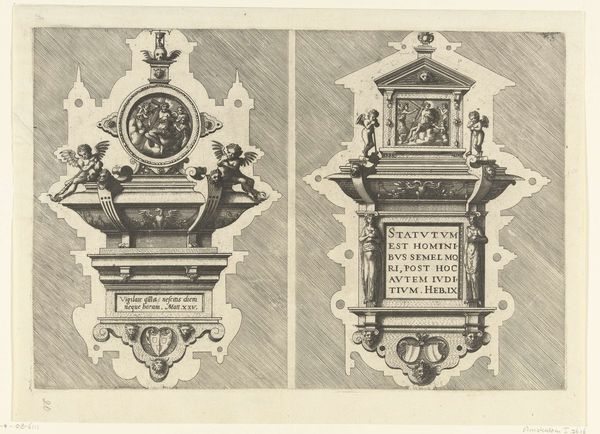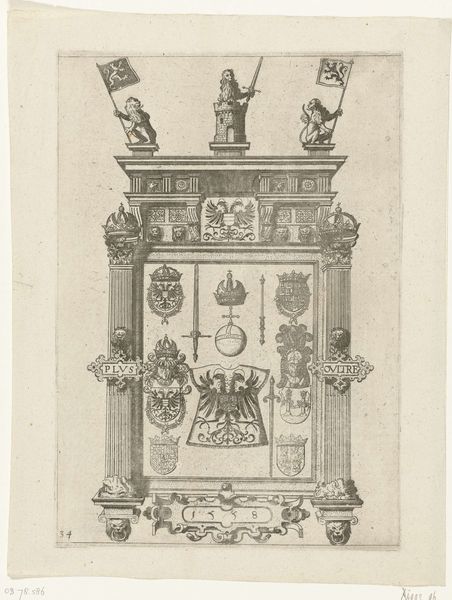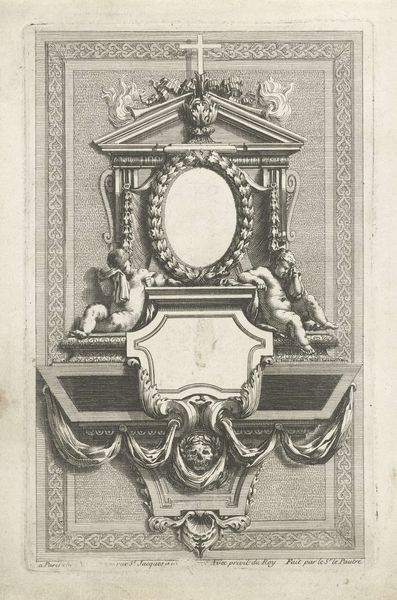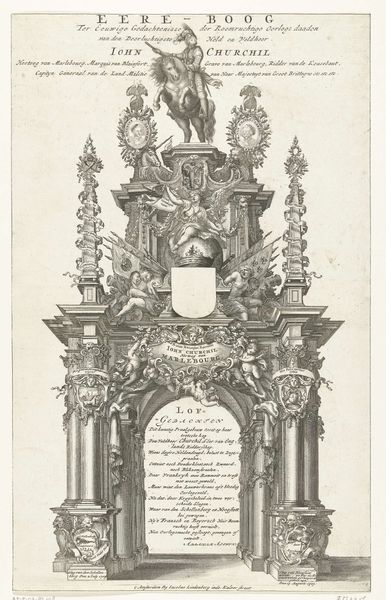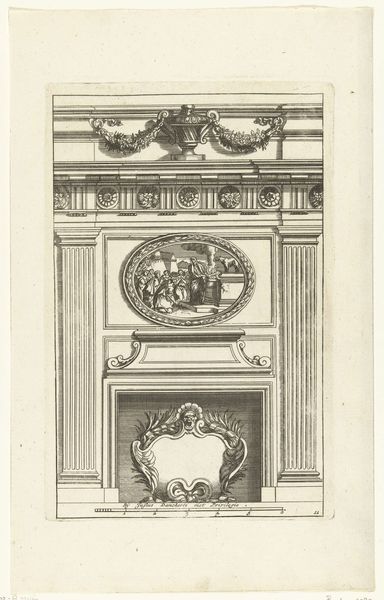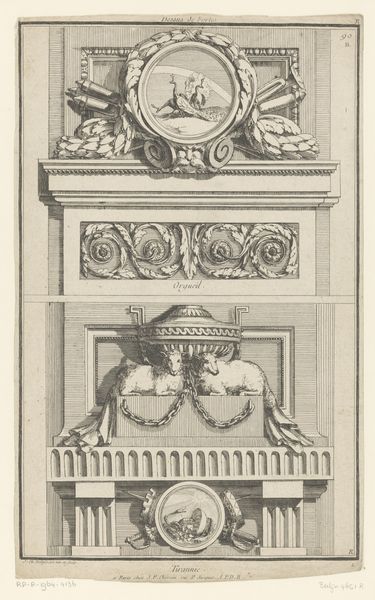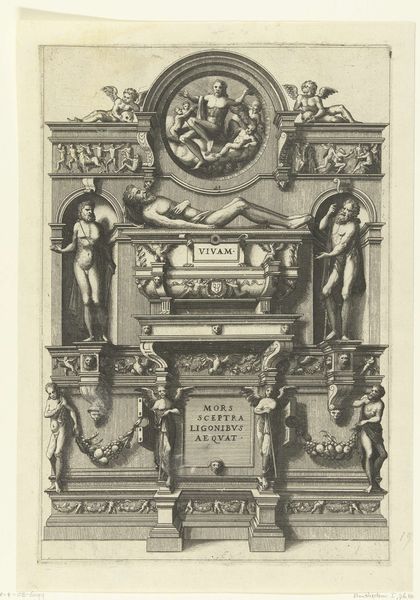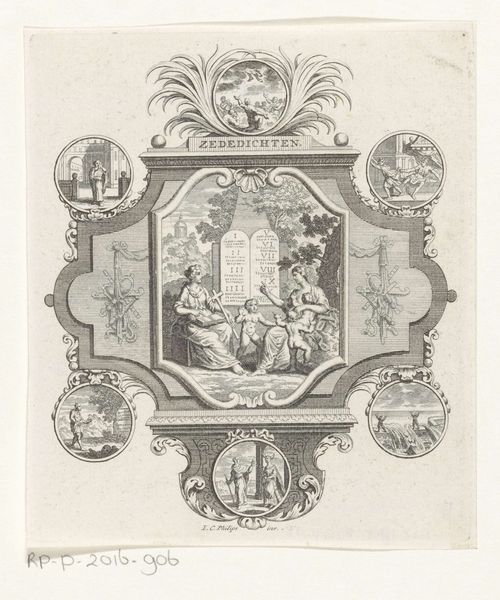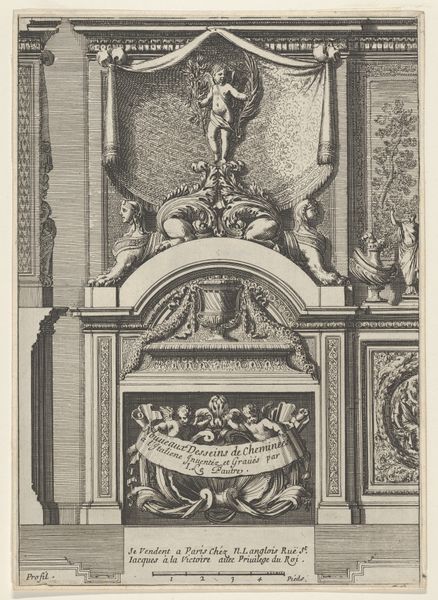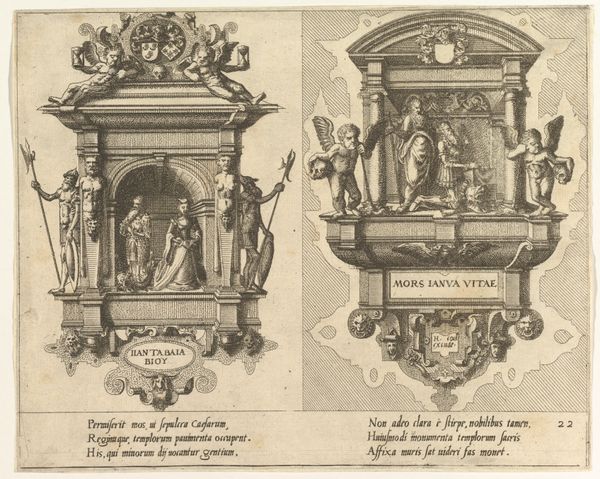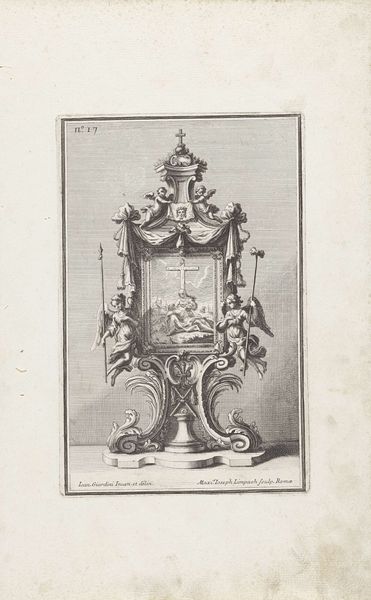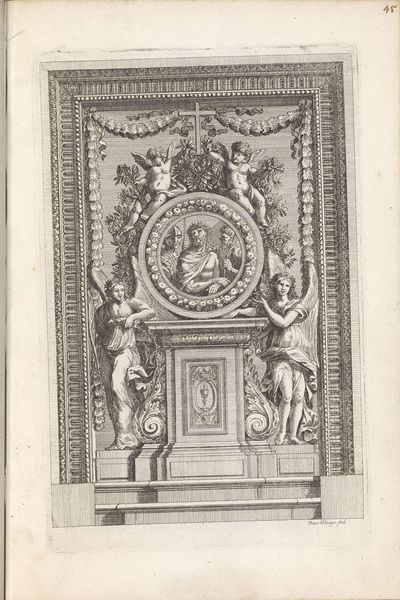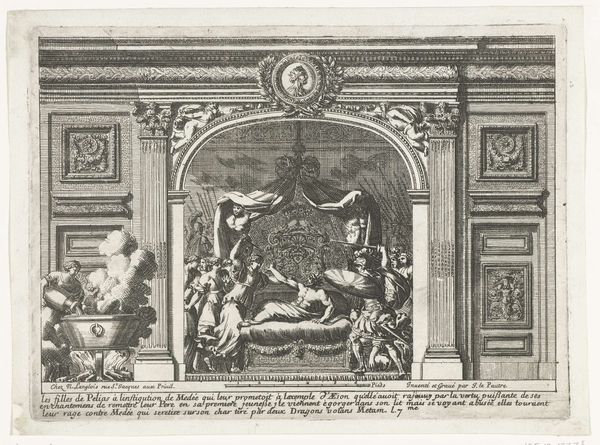
Twee epitafen met inscriptie 'Sic Deus dilexit mundum (...) 1557
0:00
0:00
print, engraving
#
portrait
# print
#
figuration
#
11_renaissance
#
history-painting
#
northern-renaissance
#
engraving
Dimensions: height 304 mm, width 208 mm
Copyright: Rijks Museum: Open Domain
Curator: At first glance, this print evokes a somber feeling. The monochromatic palette and detailed renderings of symbolic figures create a serious and contemplative mood. Editor: Indeed. Here we have "Two Epitaphs with the inscription 'Sic Deus dilexit mundum (...)'" dating back to 1557, created by Johannes or Lucas van Doetechum. It's an engraving currently housed here at the Rijksmuseum. The piece, of course, adheres to conventions of Northern Renaissance printmaking. Curator: The composition is intriguing. We have what appear to be two separate epitaphs, each richly adorned with figures and inscriptions. Note the contrasting imagery – on one side, a kneeling figure before a curtain and on the other, text framed by allegorical figures and surmounted by a Madonna and Child. It seems deliberately juxtaposed. Editor: Exactly. Epitaphs during this era weren't just memorials, they were public displays of piety, family status, and theological beliefs. The inscription, which begins with "Sic Deus dilexit mundum" - "For God so loved the world," indicates its profound Christian message, likely reflecting the religious climate and concerns of the time. It would suggest it's meant to encourage faith and memorialize specific figures. Curator: The choice of engraving as a medium speaks volumes. Its sharp lines lend the imagery an undeniable clarity and rigor, fitting to the epitaph's solemnity. The detailing in the ornamentation around the plaques themselves reveals meticulous craftsmanship. Editor: Absolutely. The figures of Justice and perhaps Hope on the right-hand epitaph alongside the Madonna reference theological and civic ideals popular in Renaissance memorial culture. Curator: I see how it encourages close examination. The piece encourages careful study. The arrangement, coupled with the stark, printed medium creates an intimate experience. Editor: Perhaps it encouraged viewers of the period to consider ideas about justice, mortality and faith, reflected through an intimate memorialization of social norms. These notions really stayed with me.
Comments
No comments
Be the first to comment and join the conversation on the ultimate creative platform.
